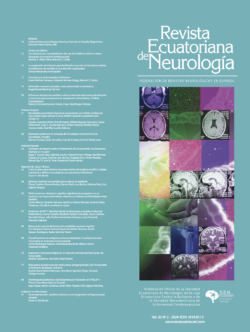Posterior reversible encephalopathy syndrome (PRES) is a transient clinical condition associated with a loss of cerebral vascular regulation. We present the case of a patient diagnosed with abdominal diffuse large B-cell lymphoma who presented to the emergency department with visual impairment, headache, and seizures. A brain magnetic resonance imaging showed T2 bilateral occipital hyperintensity and on diffusion-weighted imaging (DWI) and apparent diffusion coefficient (ADC) showed hyperintense signal, consistent with vasogenic edema compatible with PRES, with no additional findings on images or in cerebrospinal fluid. The only abnormal metabolic finding was hypercalcemia. Metastatic involvement of the central nervous system was ruled out. Medical management of the hypercalcemia was performed, achieving complete resolution of the patient’s symptoms with reversibility of the imaging alterations 6 weeks after the episode.
PRES
Encefalopatía Posterior Reversible asociada a hipercalcemia maligna: una presentación poco usual. Posterior Reversible Encephalopathy associated with malignant hypercalcemia: an unusual presentation
Síndrome de Encefalopatía Posterior Reversible de Etiología Atípica. Posterior Reversible Encephalopathy Síndrome of Atypical Etiology
Posterior reversible encephalopathy syndrome is a clinical-radiological syndrome, characterized by images compatible with vasogenic edema, whose pathophysiology is not fully clarified. There are multiple described causes of this syndrome, mainly severe arterial hypertension, renal insufficiency, sepsis, preeclampsia or eclampsia, immunosuppressive therapy and others. We report a case of a 38-year-old man, renal post-transplant in treatment with mycophenolate and prednisone, with renal failure of the transplant and chronic anemia, hospitalized by urinary focus sepsis plus lymph node tuberculosis, who after receiving 1 concentrate of red blood cells presents seizures, Hb elevation of 3.1 g/dl and images compatible with vasogenic edema and almost complete resolution of them at 16 days.





